Hi there! How are you? It has been a while since my last blog, right? I wanted to write a blog in September (the first month of placement) to share you my adventure here, but I literally felt exhausted after work. I am getting used to the new routine now— wake up at 7.30am, work at the Francis Crick Institute for a whole day, and walk back home in the evening, have my dinner, and immediately fall asleep!
Well, doing a placement isn’t very stressful or tiring, hmm, I would say, you need to rack your brain, because you are learning and understanding tons of stuff all the time! Right, before I get into placement experience, I would like to introduce my workplace: the Francis Crick Institute.
The Francis Crick Institute was recognized as the largest biomedical research centre in the EU (well, the UK is not part of EU now). It is named after the co-discoverer of DNA structure and the Nobel Prize Winner Francis Crick. The institute is a partnership between Cancer Research UK, Imperial College London, King’s College London (KCL), the Medical Research Council, University College London (UCL) and the Wellcome Trust. Therefore, there are around 1250 scientists with a multitude of expertise in the research field. I would say there are many PhDs, postdocs, research laboratory scientists from top universities like the University of Oxford, University of Cambridge, Massachusetts Institute of Technology (MIT), and also many group leaders and scientists who are very impactful in the science field. To make you more envy, Chief Executive and Director of the Francis Crick Institute, Paul Nurse was awarded the Nobel Prize in Physiology or Medicine in 2015; Director of Clinical Research at the Crick, Peter Ratcliffe was awarded the Nobel Prize in Physiology or Medicine in 2019. I am so proud to say that I successfully passed the interview and have been working in such an influential institute! (I still remember how competitive to get this placement— only 10 students were chosen out of 376 applicants!)
The Crick has a signature architecture, as the photos shown below. It is located in a new state-of-art building. It is stunning, gorgeous and makes me dumbfounded. I still remember that the building is too large that I need to spend 4 minutes to walk from the back door to the front entrance. There are 12 floors in total (including the 4 basement levels). Laboratories within the building are arranged over four floors, made up of four interconnected blocks/quadrants, which are designed to encourage interaction between scientists working in different research fields. Moreover, all the walls are glass walls, labs are close to each other, all the discussion areas/meeting rooms are accessible, to encourage open discussion and interaction between scientists from different research field. The institute also includes a public exhibition/gallery space, a 450-seat auditorium, a nice restaurant and a café.
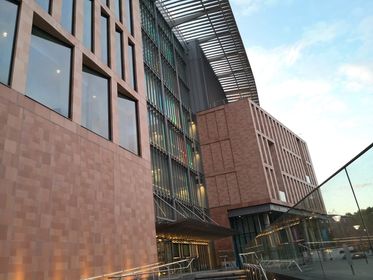
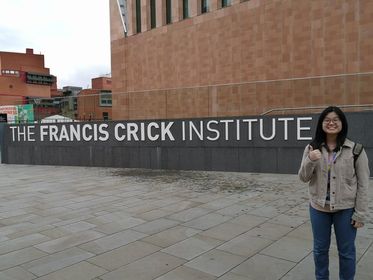
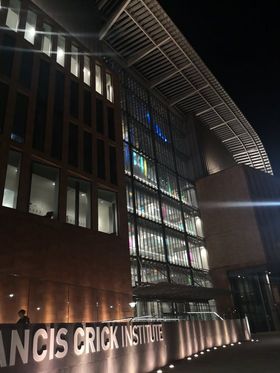
I particularly like the sculpture outside the main entrance— ‘Paradigm’. It is a 14-metre high sculpture designed by the British artist Conrad Shawcross. It is one of London’s largest tallest art works and is comprised of an angular, twisting stack of tetrahedral blocks made of weathering steel. My lab members said that it looks like a DNA structure. True.
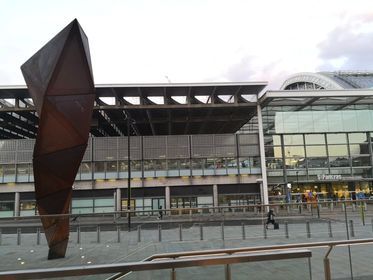
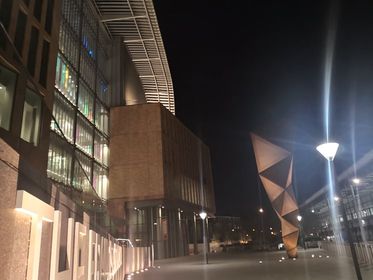
This is my Crick pass!
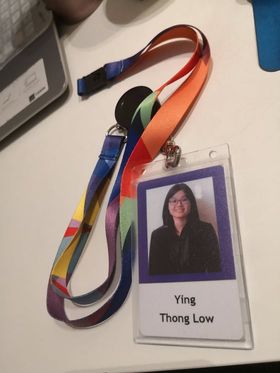
I am a research assistant in the Metabolomics Science Technology Platform (Metabolomics STP) and also in a neuroscience lab. I have a mixed project between Metabolomics STP and the neuroscience lab, therefore I get to know many scientists and have the opportunity to talk to them. They are very friendly and happy to help me. And I would say talking to them is just like having a lecture— very informative!
I have two research projects: First, is to identify the substrate(s) of LRRK2 gene, which is a common mutation in familial Parkinson Disease. I will be learning many advanced cloning techniques such as PCR, site-directed mutagenesis, and especially covalent capture, which our lab is the leading group to apply this on molecular research. On the other hand, my second project is about method development. I am going to play around and modify the current protocol on quantifying different redox pairs, in order to measure the quantity of those compounds using liquid chromatography-mass spectrometry (LC-MS) in a more economical and reproducible way.
I am so excited with my projects and enjoy working with my colleagues at the Crick. Getting into the Crick is always my dream, I am very pleased and delighted that I made it and I am making friends with those outstanding scientists😊 (it’s like making friends with your idol, very unrealistic! Haha!) I will definitely work hard and put in 100% efforts to contribute to the Crick during this year of placement. And with the education and training by the Crick, I am confident that I will have a fruitful and productive year here in London. Want to hear more about my experience? Stay tuned on my blog😊
See you next week (maybe!)😊
